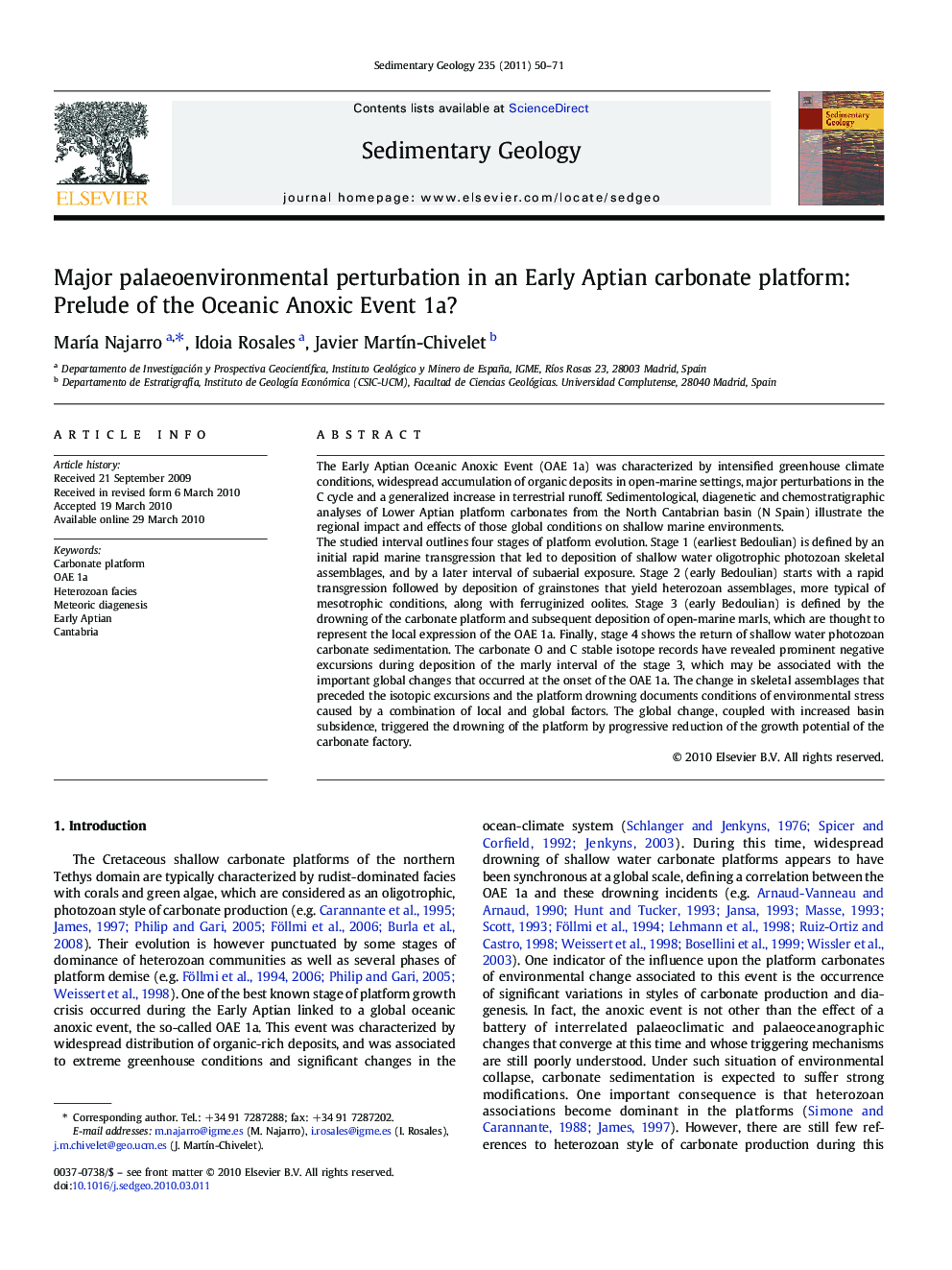| Article ID | Journal | Published Year | Pages | File Type |
|---|---|---|---|---|
| 4690034 | Sedimentary Geology | 2011 | 22 Pages |
Abstract
The studied interval outlines four stages of platform evolution. Stage 1 (earliest Bedoulian) is defined by an initial rapid marine transgression that led to deposition of shallow water oligotrophic photozoan skeletal assemblages, and by a later interval of subaerial exposure. Stage 2 (early Bedoulian) starts with a rapid transgression followed by deposition of grainstones that yield heterozoan assemblages, more typical of mesotrophic conditions, along with ferruginized oolites. Stage 3 (early Bedoulian) is defined by the drowning of the carbonate platform and subsequent deposition of open-marine marls, which are thought to represent the local expression of the OAE 1a. Finally, stage 4 shows the return of shallow water photozoan carbonate sedimentation. The carbonate O and C stable isotope records have revealed prominent negative excursions during deposition of the marly interval of the stage 3, which may be associated with the important global changes that occurred at the onset of the OAE 1a. The change in skeletal assemblages that preceded the isotopic excursions and the platform drowning documents conditions of environmental stress caused by a combination of local and global factors. The global change, coupled with increased basin subsidence, triggered the drowning of the platform by progressive reduction of the growth potential of the carbonate factory.
Related Topics
Physical Sciences and Engineering
Earth and Planetary Sciences
Earth-Surface Processes
Authors
MarÃa Najarro, Idoia Rosales, Javier MartÃn-Chivelet,
